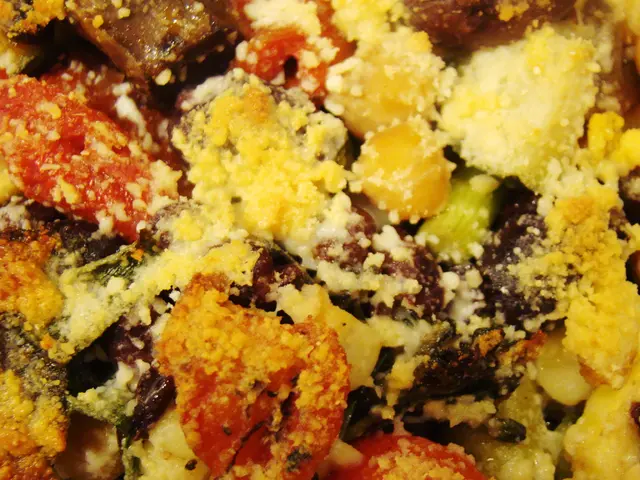Strategies for Attracting Improved Food Decisions: A Quick Guide for Coolfood
Reducing Meat Consumption in Food Service: A Key Step Towards combating Greenhouse Gas Emissions
Food service providers have the potential to significantly reduce greenhouse gas emissions by scaling back on meat offerings, according to the World Resources Institute (WRI). The organization's Coolfood Quick Guide offers a straightforward path for achieving this goal.
The interplay between individual actions and the environment is crucial in mitigating climate change. However, the efficacy of these actions depends on accessible and practical solutions. Enter Edwina Hughes, the Head of Partnerships and Engagement for Food Initiatives at the WRI. Her mission is to assist global actors in addressing emissions within the international food system.
When discussing the environmental impact of food, Hughes highlights the sector's significant contribution to greenhouse gas emissions - accounting for approximately one quarter of all such emissions, making it one of the largest polluters globally.
The WRI's Coolfood Quick Start Guide, a free, colorful, accessible resource, aims to communicate what Hughes calls the "art of the possible." It presents 18 "no regret" strategies based on real-life cases that nudge consumer behavior without preaching the merits of climate-friendly diets. The strategies are specifically designed for food service organizations that provide meals at scale, such as restaurants, universities, prisons, schools, workplaces, and manufacturing sites.
Adhering to the principle that environmental change can be influenced by altering individuals' surroundings, the Coolfood Quick Start Guide offers practical solutions for food service providers to encourage diners to make more sustainable, plant-rich choices. These strategies include product modifications, menu engineering, staff training, promotion, pricing strategies, and placement adjustments.
For instance, reducing the quantity of meat in dishes, such as burgers or lasagna, by blending it with mushrooms can preserve flavor and mouthfeel without compromising the overall meal. Similarly, in dishes where meat is a secondary component, such as curries and stir-fries, the ratio of meat can be reduced in favor of more vegetables without compromising the dining experience.
The Coolfood Quick Start Guide also focuses on marketing techniques to nudge consumer choices. By optimizing menu presentation, changing the listing order of items, or offering meal deals that favor plant-based options, food service providers can influence consumer choices subtly.
In light of concerns about the guide promoting a vegetarian/vegan agenda, Hughes clarifies that the intention is not to eliminate animal-based products from human diets, but instead to develop habits and food systems in sync with sustainability goals and planetary health.
The Coolfood Quick Start Guide is the culmination of extensive research, including combing through 350 environmental research reports, data about emissions from food, and behavioral science literature. While it distills the WRI's larger Food Service Playbook that offers 90 techniques to shift consumption, the Coolfood Quick Start Guide focuses on those techniques deemed most practical and viable for the industry.
Although the Coolfood Quick Start Guide presents practical steps for food service providers to combat emissions and promote sustainable choices, challenges remain in implementation. The supply chain plays a critical role, as many eateries rely on pre-made dishes. Encouraging suppliers to introduce emerging options like blended burgers may require addressing the chicken-and-egg problem: Will these options sell, or do we need to purchase them to generate interest?
Consumers play a significant role in closing this loop. By voicing our preferences for sustainable options, we can send a strong message to the market, expediting the transition to more plant-based, environmentally friendly meals. As Hughes notes, incremental changes are essential, and the Coolfood Quick Start Guide offers practical steps to facilitate this transformative journey.
- The World Resources Institute's Coolfood Quick Start Guide provides practical solutions for food service providers to encourage diners towards sustainable, plant-rich choices, such as reducing meat content in dishes and optimizing menu presentations to influence consumer choices.
- In the fight against climate change, the food service industry can significantly contribute to reducing greenhouse gas emissions by adopting strategies outlined in the Coolfood Quick Start Guide, which includes blending meat with plant-based alternatives and presenting plant-based options more prominently on menus.
- Edwina Hughes, Head of Partnerships and Engagement for Food Initiatives at the WRI, emphasizes that the Coolfood Quick Start Guide is not about eliminating animal-based products from human diets but developing sustainable habits and food systems that align with environmental health and sustainability goals.








